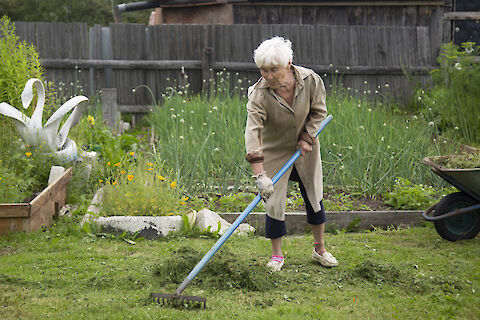
As winter approaches, it's time to think about the health and well-being of your garden. Winterizing your garden is a crucial step towards ensuring a glorious bloom when spring comes around. This may seem like a daunting task, particularly if you are a senior citizen or have limited mobility.
Senior Helpers Madison, WI, has what you need to know about winterizing your garden. In easy, manageable steps, we'll help you prepare your garden for the chill. Regardless of whether your fingers are green or not, you'll be able to protect your plants from the harsh winter, ensuring they emerge in the spring as vibrant as ever.
Understanding Winterization
Winterizing is the process of preparing your garden for winter. It involves protecting plants from harsh weather, preserving soil quality, and ensuring your garden's resilience during the cold months. This important step keeps your plants healthy and sets them up for a thriving spring.
Step-by-Step Guide to Winterizing Your Garden
Cleaning the garden should always be the first step. Removing dead leaves and debris prevents decay and diseases that could harm your plants in spring. With a simple rake or broom, you can clean your garden without straining yourself. If you need help with this, don't hesitate to ask a friend, family member, or caregiver.
Next is protecting your plants. Not all plants can survive the winter cold, particularly perennials that rest dormant beneath the ground. Using materials like straw or fleece, you can shield plants to insulate them from freezing conditions. Wrap larger plants and shrubs and use buckets or plant pots for smaller ones.
Consider mulching your garden for winter. Mulch serves as an insulator, retaining soil warmth and blocking harsh weather elements. Apply a thick layer of mulch around your plant beds. Remember, you can use organic material like compost or straw, which adds nutrients to your soil.
Finally, remember to water your plants in winter. While plants may not look active in winter, they are still alive and need hydration. Water your plants sparingly, taking care not to overwater, as cold weather reduces evaporation.
Choosing Cold-Resistant Plants
To further winter-proof your garden, consider incorporating cold-resistant plants. These plants are adapted to survive sub-zero temperatures. Examples for our region include Siberian Squill, Winter Jasmine, and Snowdrops. These plants add life to your winter garden and are easier to maintain.
Your indoor plants also need special care during winter. Providing enough light, maintaining moderate temperature and humidity, and reducing watering can help your indoor plants survive the chilly months.
Discover Compassionate Senior Care
Winterizing your garden might seem like a challenging task, but with these simple steps, you can ensure a healthy and beautiful bloom in spring. As you take on this process, remember that you are setting the stage for your garden's future success.
If you're a senior residing in Madison, DeForest, Cottage Grove, Fitchburg, or Verona and need help with managing your garden or any other senior care tasks, contact us at Senior Helpers Madison, WI. We proudly provide premium senior care services!